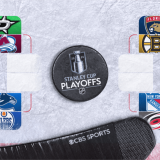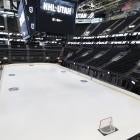The NHL collective bargaining agreement is once again in the spotlight after the league formally notified the NHLPA that it would not be reopening the CBA. The players association has until September 15 to reopen it and their decision could impact future seasons as well as international tournaments.
On Friday, NHL Commissioner Gary Bettman released a statement informing that the league "would not be exercising its option to reopen the Collective Bargaining Agreement for the 2020-21 season." The NHLPA was made aware earlier in the day and the league's deadline to make this decision was September 1.
He explained the reasoning in the statement saying, "Based on the current state of the game and the business of the game, the NHL believes it is essential to continue building upon the momentum we have created with our Players and, therefore, will not exercise its option to reopen the CBA. Rather, we are prepared to have the current CBA remain in effect for its full term – three more seasons through the conclusion of the 2021-22 season."
Here is everything you need to know about how the reopening, or lack thereof, could impact the players, the season and the fans.
Here's what happens if the CBA is reopened:
The players have until September 15 to decide if they are going to opt out of the current agreement with the NHL. If the CBA is reopened, the agreement will terminate at the end of the upcoming 2019-20 season and could open the door for a work stoppage in September of 2020.
If the CBA is reopened, negotiations would begin to try and have each side settled and happy with an agreement before the current deal runs out. The players would voice their concerns and the NHL would alert them to what they are willing to agree on. The talks between the two parties have been going on for some time but with the deadline approaching are now meeting to discuss next moves.
According to Sportsnet's Elliotte Friedman, "The players' executive committee -- and others who wish to attend -- meets Wednesday in Chicago. There is believed to be momentum in talks." He said if a deal cannot be reached by the 15th, both sides will agree to move the NHLPA's deadline to a future date.
The NHLPA released the following statement after the league chose to remain in the current deal:
NHLPA response...what you would expect pic.twitter.com/0bDahxz6w8
— Elliotte Friedman (@FriedgeHNIC) August 30, 2019
Here's what happens if the CBA is not reopened:
If the CBA is not reopened the agreement in place now will continue through the 2021-2 NHL season. The current agreement expires on September 15, 2022.
What it means for the players:
The players have voiced many concerns with the current CBA and the state of the league as it stands now. The main reason according to the Associated Press and Associated Press Canada is the division of salaries and the revenue split between players and coaches. Escrow was listed as the majority issue with the current agreement with 80.6% of representatives naming that as the main problem players have.
NHL owners and players divide hockey-related revenue making it an even 50/50 split as the current deal stands. If, when all off the accounting is done for the season, the player's salaries exceed that 50% mark a certain amount is set aside and pulled from the player in escrow to make it even. While there is no easy fix, and players most likely do not want to reduce salaries, their consistent displeasure with this section of the CBA could cause the the NHLPA to reopen the conversation. Players have mentioned that their salaries are not growing appropriately to the increased salary cap.
What it means for the fans:
If the CBA is reopened and it does lead to a work stoppage this could mean another NHL lockout like the ones we have seen in the past. Fans of course would not be able to root on their favorite team and attend games.
Bettman mentioned the fans in his statement announcing the NHL's decision saying, "It is our hope that a continued, sustained period of labor peace will enable us to further grow the game and benefit all constituent groups: NHL Players, Clubs, our business partners and, most important, our fans."
The NHL has seen labor issues rather frequently in the last three decades. The league has experienced three lockouts and a strike since 1991-92, including the 2004-05 lockout that led to a missed season and resulted in "2004-05 Season not played" being engraved on the Stanley Cup in place of a champion from that season.






















